Capability Brown transformed the gardens of England, Buckingham Palace included. So who better to introduce a book to mark his 300th anniversary – packed with exquisite paintings of his landscapes – than our most blue-blooded and green-fingered amateur artist…

‘Lancelot Brown has remained the most famous of all landscape garden designers, his peerless and powerfully influential gardens exhibit his masterly handling of ingredients,’ said Prince Charles
All gardening is landscape painting,’ declared Alexander Pope in 1734 at the start of the great English landscape revolution, and Lancelot ‘Capability’ Brown set out, 20 years later when the movement was at its height and he the chief architect, with the intention of creating a painter’s paradise.
Hence, on the tricentennial of his birth in Northumberland in 1716, it is the most natural thing that Tim Scott Bolton should have chosen to paint some 40 views of his sublime and now perfectly mature landscapes, and to publish them in tribute to his colossal achievement.
Painters are naturally drawn to Brown’s landscapes. His patrons saw the idealised landscapes he conjured as physical realisations of 17th-century paintings of the world of classical antiquity.
His work was the apogee of the movement that started in an age that described itself as ‘Augustan’; the age of Pope and William Kent and Lord Burlington.

‘He made the new style and conjured from the old a beauty, intrinsically there, ‘of fields and woods, herds of cattle and swarms of bees’,’ said Prince Charles
It is almost impossible to imagine, even looking at all those wonderful Jan Kip engravings, the colossal rigid formality of the surroundings of the great manors and estates of England in the mid-18th century as Brown approached them.
But where Kent jumped the garden gate, Brown was to banish the hand of man for tens of square miles and create a seemingly ‘natural’ bucolic paradise of pasture, woodland and great singled-out and clumped park trees.
He found this ‘Virgilian’ perfection already nascent in the fold of the English countryside, waiting to be discovered.
In fact, his detractors argued, his artifice created landscapes that ‘differ very little from common fields, so closely is Nature copied in most of them’.
Brown’s relationship with my own ancestors was not entirely without its complications.

Tim Scott Bolton, landscape artist and author of the book, Brush With Brown
Spurned by the circles of King George II, despite being at the height of his powers and fashion in the 1760s while working on Blenheim and Chatsworth, it was King George III who, as a man with a fascination for agriculture and farming, and as someone who would have completely understood the Elysian beauty of Transylvanian farming and landscape, brought Brown into the fold of Royal patronage.
In July 1764, he made Brown Chief Master Gardener at Hampton Court. Brown went on completely to re-structure Buckingham House in his inimitable way, the foundations of which survive today as the gardens of Buckingham Palace.
Brown has remained the most famous of all landscape garden designers, his peerless and powerfully influential gardens exhibit his masterly handling of ingredients.
He made the new style and conjured from the old a beauty, intrinsically there, ‘of fields and woods, herds of cattle and swarms of bees’.
As a very amateur painter, I can only feel profound admiration for Tim Scott Bolton’s wonderful celebration in his book of many things that I cherish, as well as his talent in bravura in its execution.
‘A Brush With Brown’ by Tim Scott Bolton is published by The Dovecote Press, £25. Offer price £22.50 (with free p&p for a limited time) until May 22. Call 0844 571 0640 or visit mailbookshop.co.uk
Stunning paintings of sublime English landscapes

Longleat, the park and house from Heaven’s Gate, painted in 1982. The house had been abandoned for 15 years by the time Brown was commissioned to redesign the estate, at a cost of £8,000
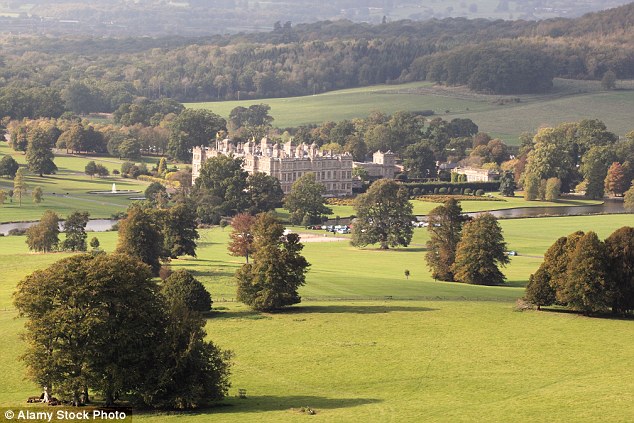
Longleat today
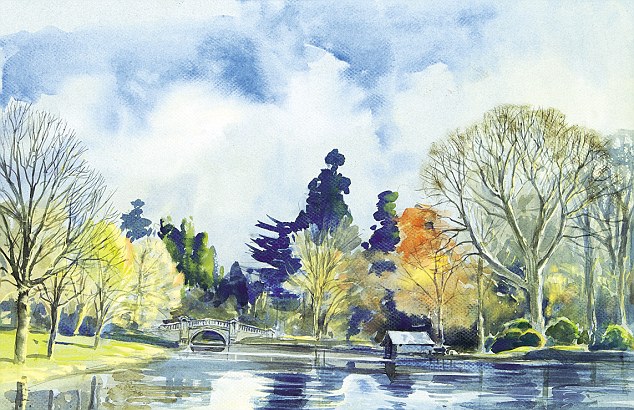
Weston Park, the lake and bridge. Brown’s work in Shropshire included creating a ha-ha to keep out deer and cultivating a pleasure ground for planting trees and shrubs
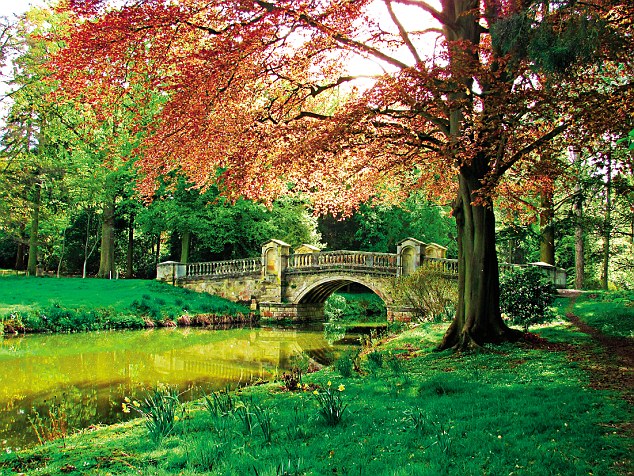
The bridge today

Stowe, south front of the house from the church. It was Brown’s 1741 appointment as head gardener at Stowe that made his career

Stowe as it is today

Chatsworth House with James Paine’s bridge. The 4th Duke of Devonshire commissioned Brown to landscape the park and reduce the likelihood of flooding. The gardener radically altered the countours of the land to the south and east to ensure the Derwent River could be seen from the house, and showed off his ability with water by raising the river’s level with a weir and turning a once rapid torrent into a serene sheet

Chatsworth House today

Alnwick Castle: Built after the Norman conquest, the castle marks the most northern of all of Brown’s landscapes, which he began work on in 1769
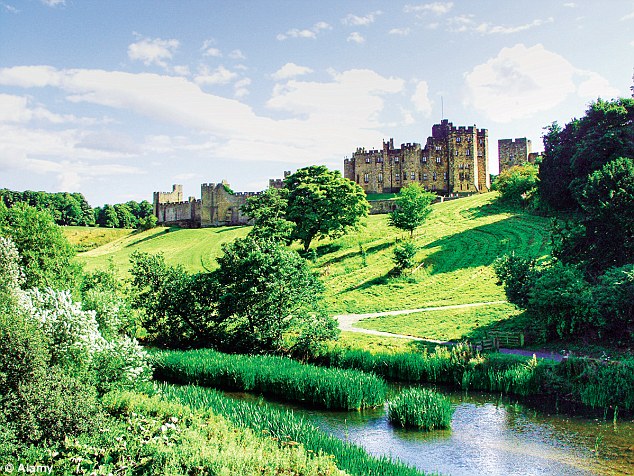
Alnwick Castle today

Blenheim Palace – widely considered his greatest landscape, Brown started work at Blenheim in 1764 at the behest of George, 4th Duke of Marlborough. He reshaped the contours of the valley and created a spectacular lake out of the meagre River Glyme
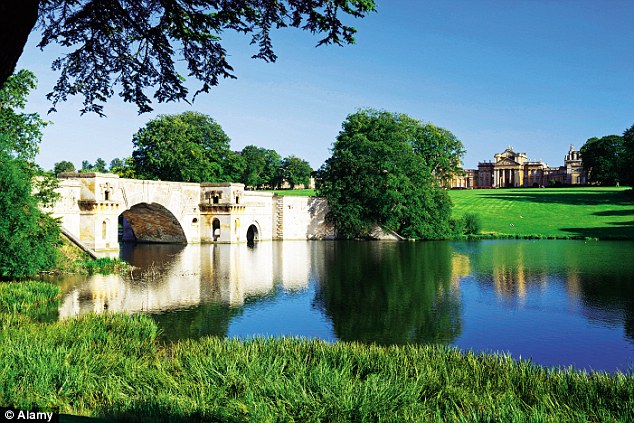
Blenheim Palace today

Corsham Court Picture Gallery, one of Brown’s most distinguished interiors
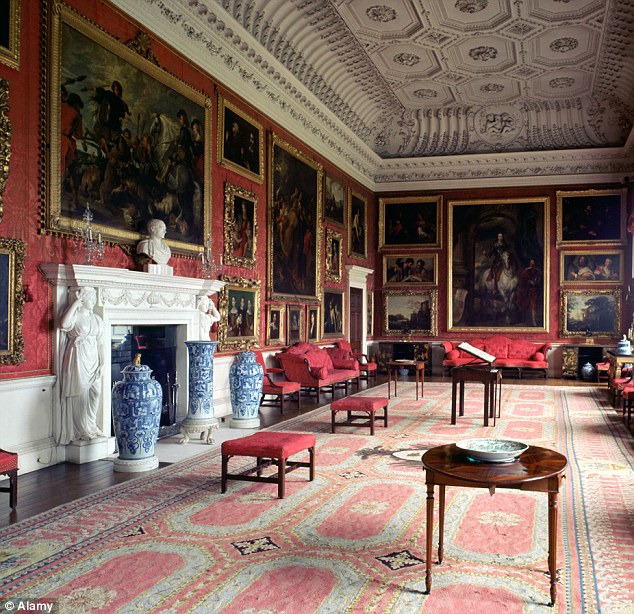
Corsham Court Picture Gallery today
All manor of great artworks
If Tim Scott Bolton’s stunning paintings have inspired you to explore Britain’s finest estates, then why not visit these stately homes where you can see other great artworks with beautiful backdrops
1 Chatsworth
Derbyshire
A Grand Tour Of The Devonshire Collection, until October 23 Capability

Brown radically altered the grounds of Chatsworth, which is home to Domenichino’s The Madonna Della Rosa, purchased by the 3rd Earl of Burlington on his Grand Tour to Italy in 1714-15. This – and many other rarely seen gems from the Devonshire Collection – can be enjoyed in a series of classical and contemporary exhibitions at Chatsworth and the new Harley Gallery at Nottinghamshire’s Welbeck estate, as well as in galleries in Nottingham and Derby. chatsworth.org
2 Kingston Lacy
Dorset
Permanent collection

The collection at Kingston Lacy, near Wimborne Minster, is a treasure trove waiting to be – and, in fact, still being – discovered. In 2010 a painting previously hung on the back stairs was restored and announced to be a ‘hidden masterpiece’ by Renaissance artist Tintoretto. Other key works that hang here in the Bankes family collection include Marchesa Maria Grimaldi And Her Dwarf and a set of portraits from the 17th century by Sir Peter Lely that have no rival outside the Royal Collection. nationaltrust.org.uk/kingston-lacy
3 Waddesd on Manor
Buckinghamshire
Permanent collection, open until October 23

Waddesdon Manor has been described as ‘a temple to the arts’ and the Rothschild Collection here is a vibrant union of masterpieces old and new. A major new addition to the contemporary collection is a pair of sculptures in the form of giant candlesticks by Portuguese artist Joana Vasconcelos (right). Made from wine bottles (Château Lafite Rothschild, of course!), the work is lit from within by fibre-optic strands. And from June 8 to October 23 ceramic artist Kate Malone, will be showing new work inspired by Waddesdon’s gardens. waddesdon.org.uk
4 Castle Drogo
Devon
Truth And Triomphe exhibition, until October 30

Here you can see a Grayson Perry tapestry next to a French masterpiece from the reign of Louis XIV. Map Of Truths And Beliefs, which includes such figures as Elvis and the artist’s teddy bear, Alan Measles, sits alongside a 300-year-old French tapestry that took six people about three years to weave by hand. Perry’s design was produced in less than a day on a modern loom in Belgium. nationatrust.org.uk/castle-drogo
5 Houghton Hall
Norfolk
Permanent collection, open Wed, Thur, Sun and bank holidays until September 25
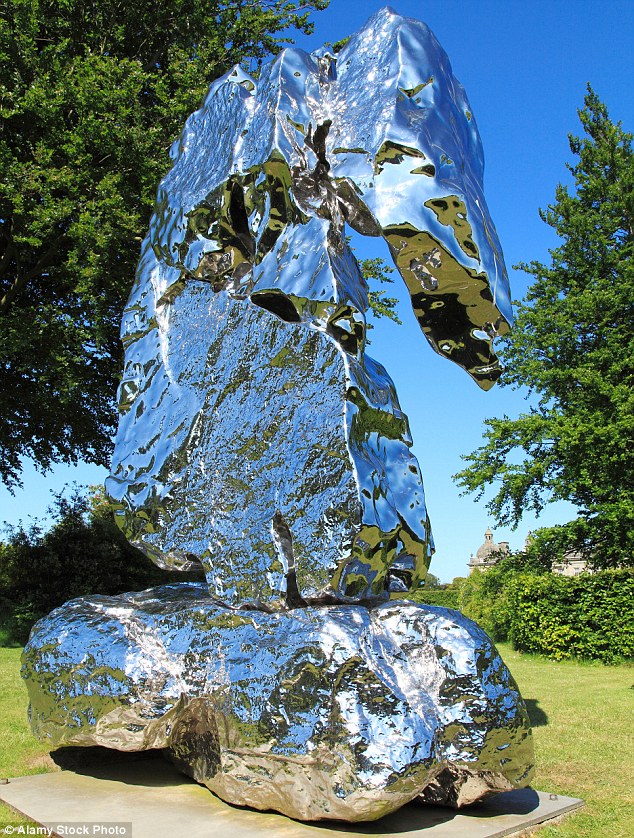
A towering silver rock (Zhan Wang’s Scholar Rock, right), a fountain of fire, a concrete gamekeeper’s hut – the current Lord Cholmondeley commissioned these, and other sculptures as modern equivalents to the temples and gazebos that decorated gardens like Houghton’s in the 18th century. A new work for 2016 is Dunstable Reel by Phillip King, a painted steel sculpture in which shapes rhythmically unfold. houghtonhall.com